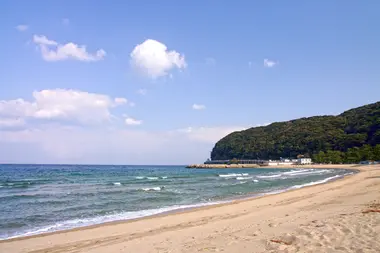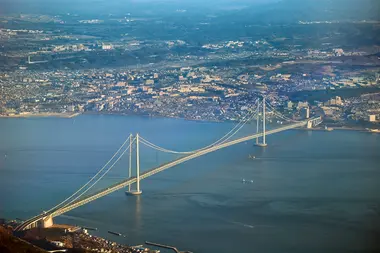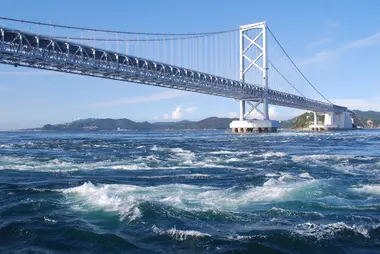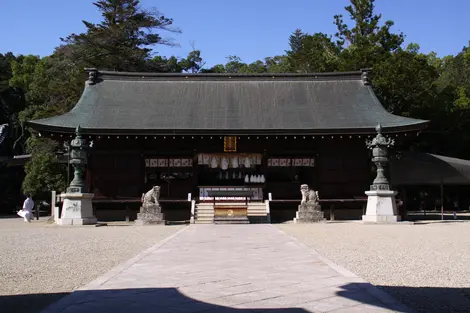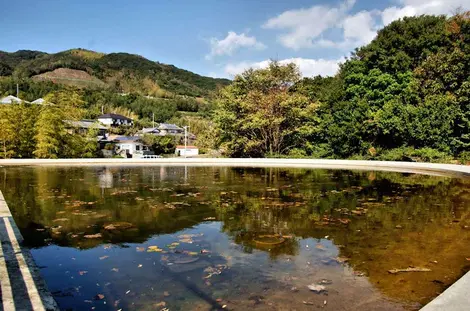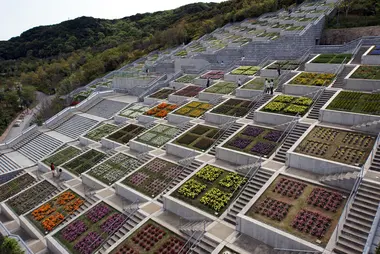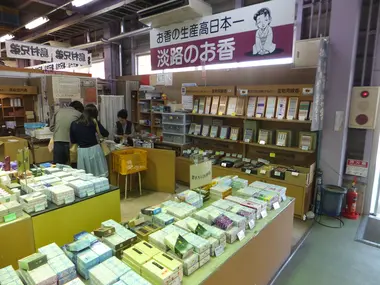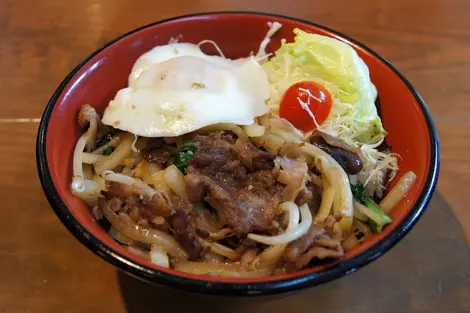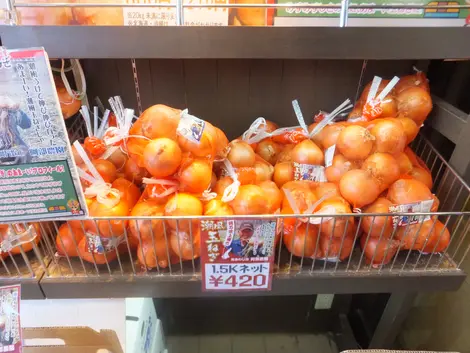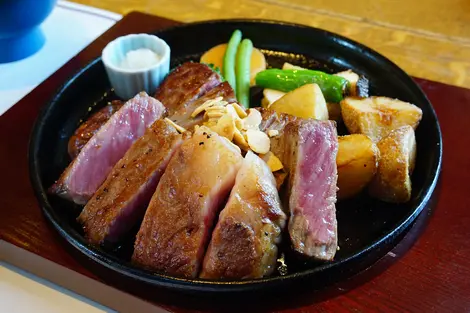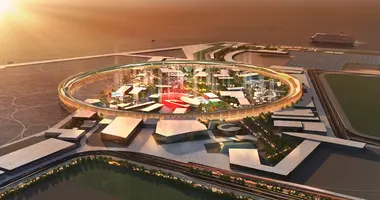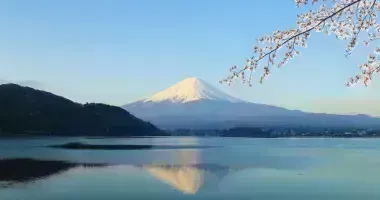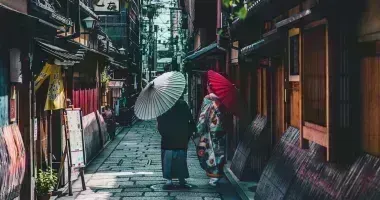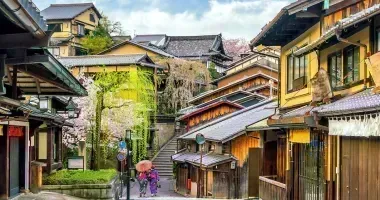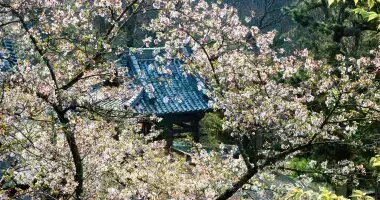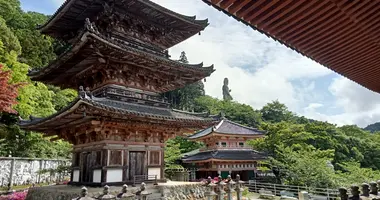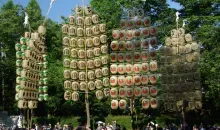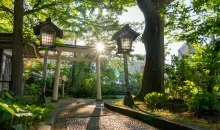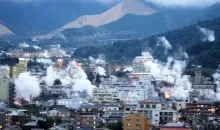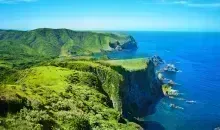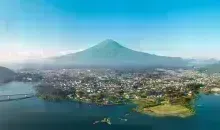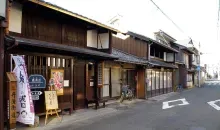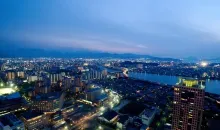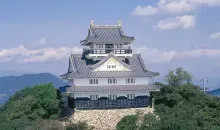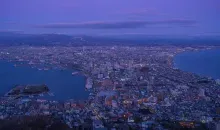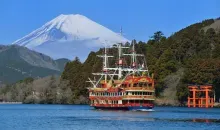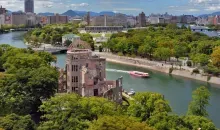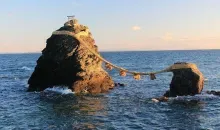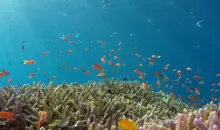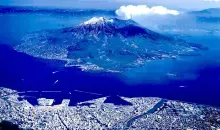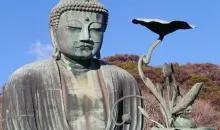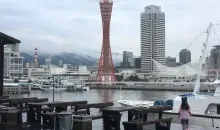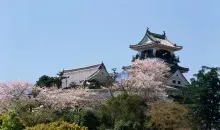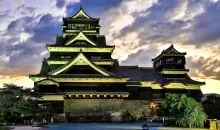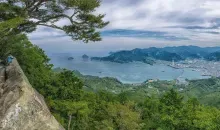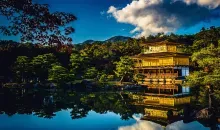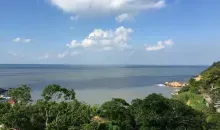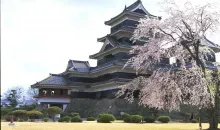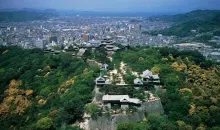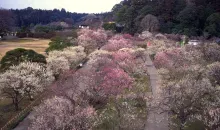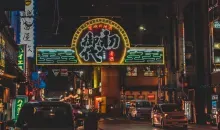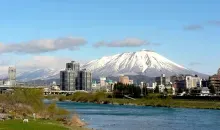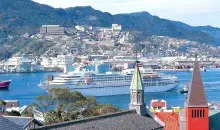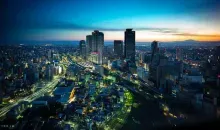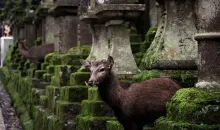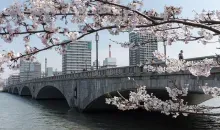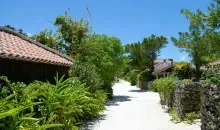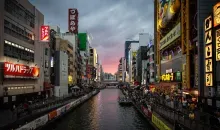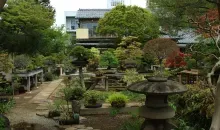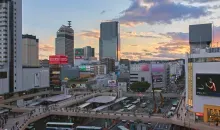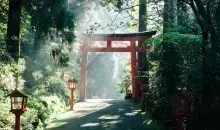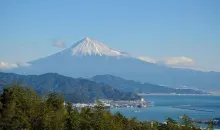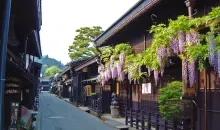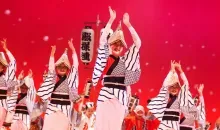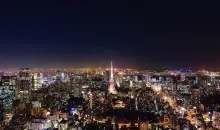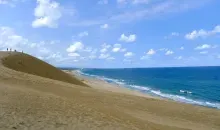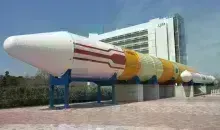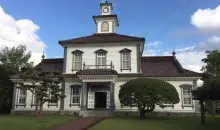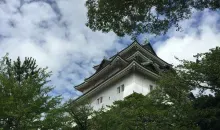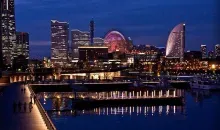Awaji Island
- Published on : 18/07/2024
- by : Joshua
- Youtube
Local Time 05:12
Symbol : cloudy_rainy
Temp : 23.3°C
Date : Today
Symbol : cloudy_rainy
Temp : 21.6°C
Date : Tomorrow
Symbol : sunny_cloudy
Temp : 15.3°C
Date : Friday
Symbol : sunny_cloudy
Temp : 22.1°C
Date : Saturday
Local Time 05:12
Symbol : cloudy_rainy
Temp : 23.3°C
Date : Today
Symbol : cloudy_rainy
Temp : 21.6°C
Date : Tomorrow
Symbol : sunny_cloudy
Temp : 15.3°C
Date : Friday
Symbol : sunny_cloudy
Temp : 22.1°C
Date : Saturday
In the grand scheme of Japanese history, Awaji is often seen as where everything began. According to legend, this was the first island ever created by the Japanese Shinto gods, Izanami and Izanagi, and this historic and cultural spirit lives on into the modern day.
Awaji Island is a part of Hyogo Prefecture in the Kansai Region, bordering Osaka, Kyoto, Okayama, and Tottori. It stakes claim to some of the area’s most noteworthy cities and attractions, including Kobe, its capital; Himeji, home to one of the most renowned castles in all of Japan, and Kinosaki Onsen, a picturesque hot spring town ideal for relaxing.
Awaji Island Geography
Hyogo is geographically unique due to having two coasts, the northern of which is the coast of the Sea of Japan, and the southern one being that of the Seto Inland Sea. The Seto Inland Sea runs between the two major Japanese islands of Honshu and Shikoku, and it is in this sea that Awaji Island is nestled. Between Honshu and Awaji Island is the Akashi Strait. Between Shikoku and Awaji is the Naruto Strait.
Much of Awaji is agricultural and rural, with low-mountains covering the island. The largest city on the island is Sumoto, located right on the coast with a population of just over 40,000 people. Running through the center of the island is the Nojima Fault, the epicenter of the 1995 Great Hanshin Earthquake. There is actually a museum dedicated to the event, with a portion of the fault visible.
Awaji Travel Guide
The Two Bridges
Awaji Island is the largest island in Japan's Inland Sea after Shikoku, to which it is now joined after the building of the Naruto Ohashi and the Akashi Kaikyo Ohashi bridges. Awaji Island is easily reached from nearby Kobe, Kyoto, or Osaka.
The island has changed significantly since the opening of the Akashi Straits Suspension Bridge (Akashi Kaikyo Ohashi), which connects Hyogo Prefecture to Awaji Island. The Akashi Kaikyo Ohashi, which opened in 1998, has the longest central span of any suspension bridge in the world, at 1,991 m (6,532 ft). For those visitors interested in the building of the bridge, the Bridge Exhibition Center (Hashinokakagakukan) near Maiko Station on Honshu, southwest of Kobe, has information on its construction.
There are also tours of the bridge available for those who book online in advance.
Perhaps Awaji Island’s most famous attraction, however, are the Naruto whirlpools, located in the south, in the Naruto Strait, that can be seen from the Naruto Ohashi Bridge, for which it is named. These whirlpools are caused by tidal movements between the Inland Sea and the Pacific Ocean and have currents that can reach 20 kilometers per hour! From the southern port of Fukura, there are daily cruises to see the Naruto Whirlpools and the Naruto Ohashi Bridge. The best time to see them is usually one hour before or after the start point of the tide, which takes place four times a day.
Cultural & Historic Attractions
There are a number of historic temples and shrines throughout Awaji Island, largely related to the island’s significance in Japanese mythology. North-east of the island is Honpukuji Temple, situated on the top of a hill. The temple faces Osaka Bay. This former temple of the Shingon esoteric school of Buddhism, dedicated to Yakushi Buddha, was renovated in 1991. The main building of the temple, Tadao Ando's Water Temple, or Mizumido, is a striking modernist building. The circular concrete building has a lotus-filled pond for its roof, and the temple interior is entered down a curved stairway.
Iwagami Shrine (岩神神社) and Izanagi Shrine (伊弉諾神宮) are located close to each other in the north-western part of the island. Izanagi Shrine is connected with the creation myths of Japan, which have Awaji as the birthplace of Japan. It is the most important shrine on the island. Izanagi Shrine's spacious grounds are popular with locals for the important festivals of the Japanese year, such as O-shogatsu (New Year) and Shichi-go-san.
The smaller Iwagami Shrine is dedicated to a cluster of holy rocks, hence the name of the shrine, which can be loosely translated as "rock or boulder god" shrine. The main hall, or honden, dates from the 16th century, and the impressive rocks have been viewed since Heian times.
Senzan Senkoji Temple, dedicated to Kannon, the Bodhisattva of Compassion, is found at the island's highest point, on Mount Senzan. From here, you have a splendid view of a string of islands and islets in the Inland Sea and the mountains of Shikoku Island.
Sumoto Castle which was rebuilt in 1928 after the original Edo Period building had been demolished in the 1630s. The Awajishima Museum, at the base of the castle, is dedicated to the history and culture of the island. It has displays on local festivals, puppet theater, and the art of local painter Tamao Naohara.
Awaji is the home of the Ningyo Joruri Puppet Theater, which is a forerunner of bunraku. The Awaji Joruri Puppet Theater in Fukura, in the south of the island, offers short performances of this over 500-year-old art. On Awaji in particular, the joruri puppet theater utilizes the rich nature of the island, emphasizing the different seasons throughout the year.
Architectural Highlights
Despite being a rural island dominated by natural scenery, Awaji Island is lauded for its architecture. Many of these structures are largely influenced by the surrounding geography. One of the the prime examples of this is Awaji Yumebutai (Awaji Island Project), which was designed by famous architect Tadao Ando to reuse the site from which earth was extracted for the construction of Kansai International Airport (KIX).
The site includes beautiful gardens, walking trails, and Japan's biggest greenhouse. Another Ando building on Awaji is the modernist Water Temple (Shingonshu Honpukuji; 本福寺) constructed in 1991, a beautiful space constructed with pools and concrete walls.
Another notable location is Zenbei Seinei, a very unique resort based around the traditional practices of Zen. Guests can stay overnight, engage in meditative practices, and eat unique dishes indicative of Awaji Island. The structure is built mostly of Japanese cedar and is above the trees of a dense forest. It’s architecture incorporates traditional Japanese aesthetics with contemporary minimalism.
Pop Culture Attractions
The Godzilla Interception Operation attraction opened in 2020. The fun attraction consists of several different areas. Included are the world's largest Godzilla statue, with a total length of around 120 meters, the world's first permanent Godzilla Museum, a zipline, a theater, and an interactive shooter game. In addition, the restaurant serves items based off of iconic monsters and themes from the franchise, including a curry presented to look like Mothra, a puff pastry shaped like Godzilla’s head, and a basket meal shaped like King Gidora. The design of the featured Godzilla is based on the one featured in Shin-Godzilla, the 2016 interpretation created by Hideaki Anno of Neon Genesis Evangelino fame. The attraction is an absolute must for fans of Japan's most famous kaiju.
On the opposite end of the Japanese pop culture spectrum, cuteness overload awaits at Hello Kitty Appleland, an attraction dedicated fully to the internationally beloved Hello Kitty franchise from Sanrio. Enjoy the Hello Kitty Smile, a multimedia center that features art installations, a 360-degree theater, restaurants, gift shops, and Hello Kitty mascots out and about to greet guests.
Nearby, Hello Kitty Applehouse features a signature 360-degree theater and even an observation deck to enjoy the surrounding beauty of Awaji Island. Both fans of the Hello Kitty franchise as well as those with an appreciation for modern art and installations ought to visit during their time on Awaji!
An island of fragrance
Awaji is well known for a number of artisanal crafts. One of its most notable exports is that of incense sticks, largely sought after by fragrance enthusiasts. Manufacturers from Awaji Island are also often contracted to produce signature scents for different brands or retailers throughout Japan! A number of different workshops throughout the island offer interactive incense-making experiences that are worth trying out and provide you with a great, usable souvenir for back home!
The food delicacies of Awaji Island
Being largely agricultural, Awaji Island offers some amazing produce. It’s largest farmed export is onions. These onions can be had in a local favorite dish mixed with another signature product of the island: beef! Awaji Gyudon is a simple rendition of the classic Japaense comfort food, only using locally sourced ingredients to showcase the quality. Wagyu Beef from Awaji is actually the progenitor of the famous Kobe Beef and Matsuzaka Wagyu that are sought after all around the world.
Being an island, Awaji also boasts amazing quality seafood. One of the best ways to try out these delicacies is with their signature noodle soup, that features different shellfish and other goodies! In particular, Awaji is known for Aji (Horse Mackerel) and Shirasu (White Bait Fish). A bowl of these fish, simply prepared over rice and seasoned with some wasabi and soy sauce, is the optimal way to enjoy the freshness and natural flavors!
Getting to Awaji
- By Air
Kobe Airport is the nearest airport to Awaji Island and has flights to Ibaraki, Ishigaki, Kagoshima, Naha (Okinawa), Nagasaki, Sapporo, and Tokyo (Haneda). Kobe Airport is located on an artificial island just south of Port Island and connects to Sannomiya by Port Liner trains. Additionally, Kansai International Airport has direct transfers to Osaka and Kyoto, and from these two cities, transportation to Hyogo and then Awaji is made easy.
- By Train
The JR Shinkansen bullet train stops at Shin-Kobe Station. About 1 km south of Shin-Kobe Station, Sannomiya Station is the main rail hub for intercity Hankyu, Hanshin, and JR trains to Osaka and Kyoto. Himeji is another major destination in Hyogo Prefecture with a Shinkansen stop. There are no trains on Awaji Island.
- By Ferry
There are direct ferry services to Iwaya on Awaji from Akashi Port, a short walk from JR Akashi Station. The Jenova ferry is a 15-minute crossing from Akashi to Iwaya. For adults, the fare is 500 yen, with an extra 300 yen fee for a bicycle.
- By Bus
There are Express Bus services from JR Shin-Kobe Station to Sumoto on Awaji (2 hours) and on to Tokushima on Shikoku.Infrequent local buses around the island are provided by Awaji Kotsu.
Interested by Awaji Island
Discover other cities to explore

